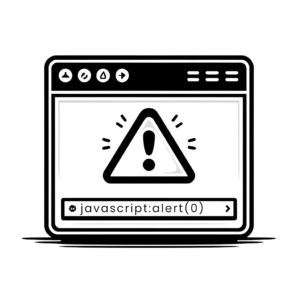Understanding Cross-Site Scripting (XSS)
Cross-Site Scripting (XSS) is a common security risk in web applications. It lets hackers insert harmful scripts into web pages that other people see. This happens when a website doesn’t check user inputs properly, letting attackers run scripts in the victim’s browser. The risks of XSS include stealing important information, taking over user sessions, changing how websites look, and even spreading malware to people who don’t know about it.
To protect your website from harmful attacks, it’s very important to check and clean all the information entered by users on your website. This includes things like forms they fill out and elements in the website’s address. By checking all information that goes in and all that comes out, you can stop attackers from putting harmful content on your website. Also, using certain protective measures like Content Security Policy headers and regularly applying updates can make your website stronger against these kinds of vulnerabilities.
Understanding the risks of Cross-Site Scripting and implementing measures to safeguard your website can help protect your users’ personal information and preserve their confidence in your site. Make sure to stay informed about the newest security threats and strategies to defend your website against harmful attacks.
Due to the increasing number of online threats, XSS vulnerabilities are becoming more common and are a serious threat to website security. XSS attacks happen when hackers inject harmful scripts into websites, allowing them to steal personal information, take control of user sessions, and deface websites. These vulnerabilities can have serious consequences like financial loss, damage to a company’s reputation, and legal trouble.
Protecting your website from harmful attacks is important to keep your information safe and your reputation intact. Ways to do this include checking input from users, encoding the information on your site, and using Content Security Policy (CSP). It’s also a good idea to regularly check for security issues, make sure your employees know how to code safely, and stay informed about potential threats. By being aware of the risks of XSS attacks, businesses can take steps to make sure their websites are secure and their data is protected.
Exploring the Different Types of XSS Attacks
Stored XSS Attacks
Stored Cross-Site Scripting (XSS) attacks pose a significant threat to websites by allowing malicious actors to inject harmful scripts into web pages. These attacks occur when user input containing malicious code is stored on a website’s server and displayed to other users, leading to the execution of the injected scripts in their browsers. The consequences of a successful stored XSS attack can be devastating, ranging from stealing sensitive user data to hijacking user sessions or spreading malware to unsuspecting visitors.
Preventing stored XSS attacks requires a proactive approach to web application security. Website developers should implement input validation and output encoding to sanitize user input and prevent malicious scripts from being executed. Additionally, regularly auditing and monitoring web applications for vulnerabilities can help detect and mitigate potential XSS attack vectors before they can be exploited by attackers.
By prioritizing secure coding practices and staying vigilant against evolving cyber threats, website owners can safeguard their online assets from the dangers of Cross-Site Scripting and ensure a safe browsing experience for their users.
Reflected XSS Attacks
Reflected Cross-Site Scripting (XSS) attacks are a big danger to website security. Hackers can sneak harmful code into web pages that users view, without the users even knowing. This happens when the website doesn’t properly check the information users input, and then shows that information back to the user, potentially running harmful code in their web browser. By taking advantage of weaknesses in places where users type in information, like forms or website addresses, hackers can trick users into running code that steals important personal information, like passwords, credit card numbers, or private data.
In order to keep your website safe from harmful attacks, like reflected XSS attacks, it’s important to do a few things. First, make sure any data entered by users follows a specific format and is not too long. This is called input validation. Then, convert any risky characters into safer ones so that web browsers don’t mistake them for code that could harm your site. This is called output encoding.
You can also add something called Content Security Policy (CSP) headers to your website and keep your web application firewalls up to date. These steps can help lower the chances of an XSS attack causing harm to your website.
DOM-Based XSS Attacks
DOM-Based Cross-Site Scripting (XSS) attacks pose a serious threat to websites, allowing attackers to manipulate the Document Object Model (DOM) of a web page to execute malicious scripts. These attacks occur on the client-side, making them harder to detect by traditional security measures. By exploiting vulnerabilities in client-side scripts, attackers can steal sensitive data, deface websites, or redirect users to malicious sites. To secure your website against DOM-Based XSS attacks, implement proper input validation, sanitize user input, and use security mechanisms like Content Security Policy (CSP) to prevent unauthorized script execution.
Demonstrating XSS in Action: Potential scenarios
Unsecured Online Forms
Online forms are important for collecting information from people who visit websites. However, it’s crucial to make sure these forms are secure to protect against potential risks. One threat to be aware of is Cross-Site Scripting (XSS), where hackers can sneak in harmful scripts on web pages. These scripts could potentially steal personal information like passwords, financial details, and other sensitive data.
To prevent XSS attacks on your website’s online forms, it is crucial to implement proper security measures. Firstly, ensure that all input fields in your forms are validated to only accept the expected type of data. Additionally, sanitize user input by stripping out any potentially harmful code or characters. Using content security policy headers can also help prevent unauthorized scripts from running on your web pages.
It’s important to keep your website updated by regularly installing software updates, such as plugins and themes. This helps keep your online forms secure. Hackers can take advantage of security holes in outdated software to put harmful code on your website. Doing regular security checks and testing can help find and fix any weaknesses before they’re misused by hackers.
In summary, it’s important to make sure your website’s online forms are secure to prevent Cross-Site Scripting attacks. You can do this by checking for errors in forms, cleaning up any harmful input, and regularly updating your software. By taking these steps, you can help keep your website and its users safe from potential security risks.
Compromised Ad Scripts
Cross-site scripting (XSS) attacks are a serious danger to website security, especially when ad scripts are involved. Bad actors can sneak harmful code into ad scripts, which, when run on a visitor’s browser, can result in data being stolen, sessions being taken over, and websites being vandalized. These compromised ad scripts can be used to steal important information like usernames, passwords, bank information, and personal data, putting both website owners and users in a risky situation.
In order to protect your website from the risks of cross-site scripting, it is important to put strong security measures in place. Make sure to regularly check and clean your ad scripts to make sure they don’t have any weaknesses that hackers could exploit. Use content security policies to limit where scripts can come from, so that harmful scripts can’t run on your website. You should also think about setting up strict rules for input validation and output encoding to decrease the chances of XSS attacks.
By actively protecting your website and checking ad scripts for any signs of compromise regularly, you can keep your website and users safe from potential cross-site scripting attacks.
How to Detect and Prevent XSS Vulnerabilities
Secure Coding Practices
When it comes to protecting your website from the dangers of Cross-Site Scripting (XSS) attacks, implementing secure coding practices is crucial. XSS attacks allow malicious actors to inject scripts into web pages viewed by other users, leading to serious security vulnerabilities. To secure your website against XSS attacks, it’s essential to sanitize and validate all user input, such as form fields and URLs. By filtering and escaping special characters, you can prevent attackers from executing malicious scripts on your website.
Another important way to keep your website safe is by using secure coding frameworks and libraries that have built-in features to protect against XSS vulnerabilities. It’s also important to regularly update these frameworks and libraries to guard against new security threats. Another good practice is to use Content Security Policy (CSP) headers to limit where scripts can be loaded from on your website, adding an extra layer of security.
To keep your website and users safe from harmful attacks, make sure to use secure coding practices and stay informed about the latest security trends, like Cross-Site Scripting.
Security Testing and Auditing
Cross-Site Scripting (XSS) attacks pose a significant threat to websites, as they allow attackers to inject malicious scripts into web pages viewed by unsuspecting users. These scripts can then access sensitive data, manipulate the content of the page, or even redirect users to malicious sites. To secure your website against XSS attacks, it is crucial to conduct thorough security testing and auditing regularly.
Security testing involves actively scanning your website for vulnerabilities, such as improperly sanitized user inputs or lack of input validation. Auditing, on the other hand, focuses on reviewing your website’s codebase and configurations to identify potential security flaws. By combining both approaches, you can not only detect and fix existing vulnerabilities but also prevent future attacks.
Protecting your website from harmful attacks like cross-site scripting (XSS) is important. By taking steps such as checking the information users submit, encoding data before displaying it, and setting up security headers, you can reduce the chances of falling victim to XSS attacks. It’s also crucial to keep up with security news and keep your website’s software updated to stay one step ahead of cyber threats. And don’t forget to regularly test and audit your security measures to ensure your website stays safe from potential attacks.
Implementing Content Security Policies
Protecting your website from the dangers of cross-site scripting (XSS) is crucial in ensuring the security of your users’ data. By implementing content security policies (CSP), you can mitigate the risks of XSS attacks and safeguard your website from malicious scripts. CSP allows you to control which resources can be loaded on your web pages, reducing the chances of unauthorized scripts running on your website. With CSP in place, you can create a secure browsing environment for your users and prevent potential security breaches. Stay ahead of cyber threats by proactively implementing robust content security policies on your website.
Why Security Against XSS Matters
Cross-Site Scripting (XSS) is a serious cybersecurity risk that can cause big problems for both website owners and users. If a website is vulnerable to XSS attacks, bad people can sneak harmful scripts onto the site’s pages that visitors see. This could result in valuable information like passwords, money details, and personal info being stolen. The consequences can be really bad, such as losing money, ruining a website’s reputation, and even getting into legal trouble.
It’s important to keep your website safe from harmful attacks like XSS in today’s digital world. This helps protect your information and the people who visit your site. One way to do this is by using good practices like checking the information people input, encoding any information you display, and setting up security rules for your content. Having regular security checks and testing can also help find and fix any weaknesses before they cause any harm.
It’s important to be aware of the potential risks of Cross-Site Scripting and to take action to protect your website. By staying informed and proactive, you can keep your online presence safe and maintain the trust of your visitors. Stay alert and stay secure against XSS threats.

